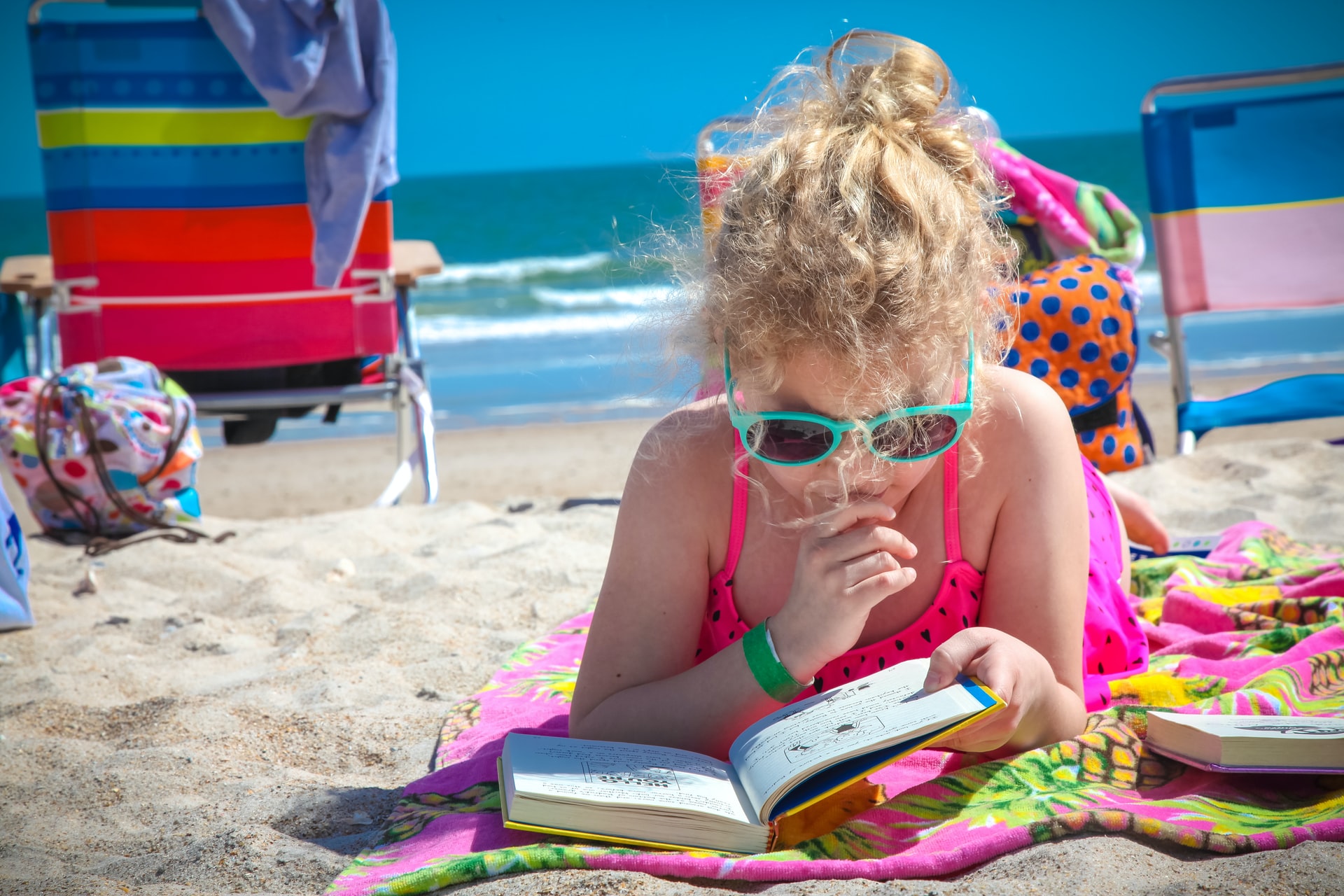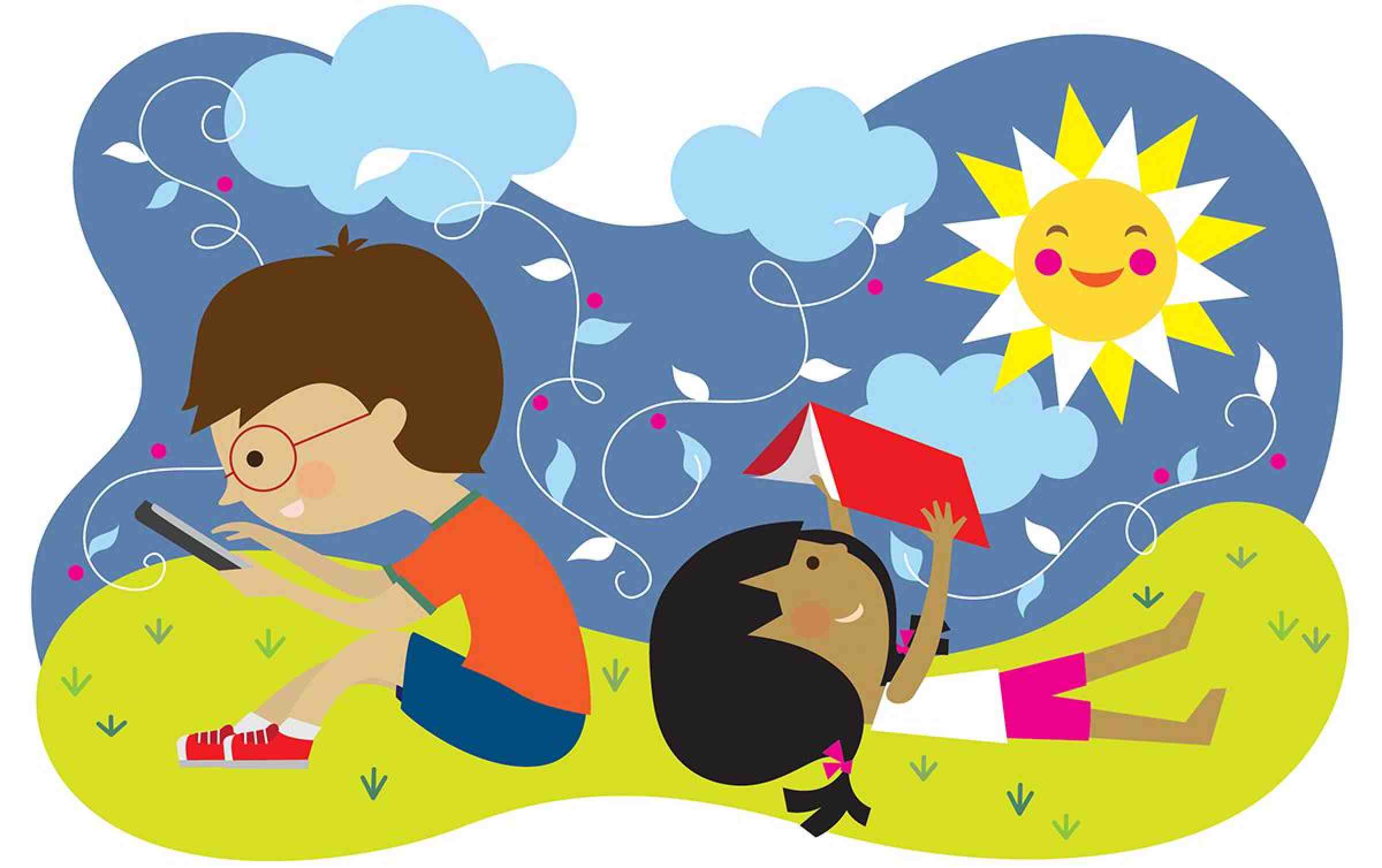 Photo by Drew Perales on Unsplash
Photo by Drew Perales on Unsplash
Learning loss is a big worry among educators, but these activities offer fun learning experiences to keep the summer slide at bay.
The summer slide, summer brain drain, summer learning loss–whatever you call it, it’s of even more concern to parents and educators with COVID thrown in the mix.
While many districts resumed hybrid or full in-person learning during the 2020-2021 school year, many educators and experts are still concerned about learning gaps and learning loss.
It’s fair to say students have more than earned their impending summer breaks. Still, it’s not a bad idea to encourage students to keep reading and to give their brains a little exercise here and there.
Here are 8 tools and resources to help avoid the summer slide and keep students’ brains active over summer break:
1. Why not explore STEM career possibilities? “The summer is the perfect time for students not only to work on keeping their academic skills sharp but to think about how they can connect what they are learning in the classroom to their futures,” says Marla Wilson, Executive Director of the STEM Careers Coalition. “Discovery Education, through the support of the STEM Careers Coalition, makes available to students a host of no-cost resources that help students explore future STEM careers. In addition, the Coalition provides a host of hands-on activities families can use at home to keep students connected to their curiosity as they help solve some of the world’s greatest sustainability challenges.”
2. Project-based learning can be a powerful approach to engage students in learning, and to help address the summer slide. The nonprofit PBLWorks is offering the following resources for families and teachers this summer: “This Teachable Moment,” a free PBLWorks eBook, provides an introduction to project-based learning and 21 ready-to-go projects to help keep students engaged and learning during the summer.
3. Summer is a great time to keep students current with their STEM skills. EquatIO is a STEM tool that allows students to delve into the world of digital and collaborative math and science. Built on Universal Design for Learning principles, EquatIO supports a wide range of learning styles and preferences meaning that it enables students with varying needs to practice and conceptualize core math concepts at their own pace. Through its various inputs, students can engage with math content and express themselves in the way that best suits their unique needs – through written work, visualizations, audio, and more. This is especially useful for students who are looking to practice their math or other science-related concepts this summer but prefer or need to learn and express themselves digitally.
4. Virtual trips, combining art and nature, finding the science in baking–what’s not to love? These summer STEM activities from Project Lead The Way will help keep the summer slide at bay. The list was compiled by PLTW teachers and is intended for students of all ages, along with their families.
5. After a tumultuous year, the last thing students want to do is to continue to “do school,” says Mara Rodriguez, director of educator success at Curriculum Associates. That is why it is paramount to engage students in wanting to continue their learning after that last bell rings. Check out this summer learning website and a blog post on how to host a summer learning challenge.
Motivating students looks different for different age groups, but a few promising practices for educators include:
-
Discussing individual end-of-year data with students, encouraging them to self-reflect on their strengths and areas for growth, and giving them a role in setting their own goals for what to work on over the summer.
-
Sharing learning goals with families and partnering with them, offering specific suggestions on how they can support learning at home.
-
Celebrating students’ commitment to their learning throughout the summer and showcasing their artifacts and progress using social media, email and/or regular mail.
-
Organizing a school-wide celebration upon return school in the fall, allowing those students who showed commitment and met their specified summer goals to be celebrated and share their learning.”
6. On Vernier’s Remote Learning Solutions webpage, educators will find a variety of resources they can share with students that provide the opportunity to visualize, analyze, and interact with real data as they stay engaged with STEM throughout the summer, according to Robyn Gastineau, director of Chemistry, Biology, & Environmental Science at Vernier Software & Technology. One example is the Vernier Graphical Analysis™ Pro app, in which educators can choose from a library of videos showing experiments synchronized with data for students to analyze. Resources are available to educators as a free 30-day trial. Vernier’s free Scratch and Arduino coding activities help students learn how the physical world connects to the computer-centric activity of learning to code.
7. “Science is like exercise – the best way to improve, or at the very least not slide backwards, is to do it,” says Mike Marvel is lead scientist and manager of product development for Flinn Scientific. If students and teachers need help with finding creative ways to do science over the summer they can check out Science2Go. The program will show students how to do chromatography with candy, make an acid-base indicator from cabbage, explore thermal conductivity with pots and pans, and a bunch of other creative activities that coach them to look at the world with a scientific perspective. And, teachers can track student progress and engagement in the program if they’d like, so that any student growth is captured.
8. This resource from the Association for Library Service to Children, a division of the American Library Association, is chock-full of activities and suggestions to help students avoid summer learning loss as they wrap up another COVID school year. You’ll find resources on literacy, arts, wellness, STEM, college and career readiness, parent engagement, and more.
9. Teachers who are searching for more formal resources can visit the KidWind website and find free activities on renewable energy for elementary, middle, and high school grade levels. The site also offers short courses for teachers to build skills and kits to help explore wind energy or solar power through creative projects. “Offering students activities to do over the summer that focus on clean energy, especially around what is taking place in their own communities, can help students explore STEM in addition to helping them see what a renewable energy future looks like. Visit a local wind farm or solar project, explore the companies that provide power to your town or city. Many times these organizations are happy to share what they are doing,” said Michael Arquin, founder of KidWind.
10. Aperture offers resources for students and families to help them get working on social and emotional learning over the summer, including a free set of downloadable “Promoting SEL at Home” guides. Aperture’s blog provides additional ideas to help teachers and out-of-school staff easily and effectively incorporate these SEL activities into afterschool programs and summer school. “One thing we all know is that this past year has been hard on pretty much everyone. And while students and educators alike may need a break from the stress of learning during a pandemic, there are things educators can do to recharge, and help students regroup, over the summer. Teachers can take self-paced SEL PD over the summer with Aperture Education’s EdSERT online program. EdSERT is a comprehensive set of research-based modules to help educators improve their SEL practice. Teachers who want a sample of what EdSERT offers can download a free PDF Special Edition Optimistic Thinking Guide at https://bit.ly/3hzBK7w,” said Jessica Adamson, CEO of Aperture Education.
11. “Nationally, students could lose five to nine months of learning by the end of June 2021 and when students fall behind it can be extremely stressful, leading to a loss of confidence,” said Justin Reilly, CEO of Impero Software. Prioritizing well-being, mental health, and connectedness will be of the utmost importance. Impero Backdrop, a free tool to log mental health concerns, can provide a repository of information on student wellbeing because students may need extra support over the summer. Students also should be allowed to use school technology over the summer, even if schools aren’t offering summer learning–they can still help students learn by giving them access to educational content on school devices, made possible by device management solutions.
Discover More Lessons for summer with RobotLAB

